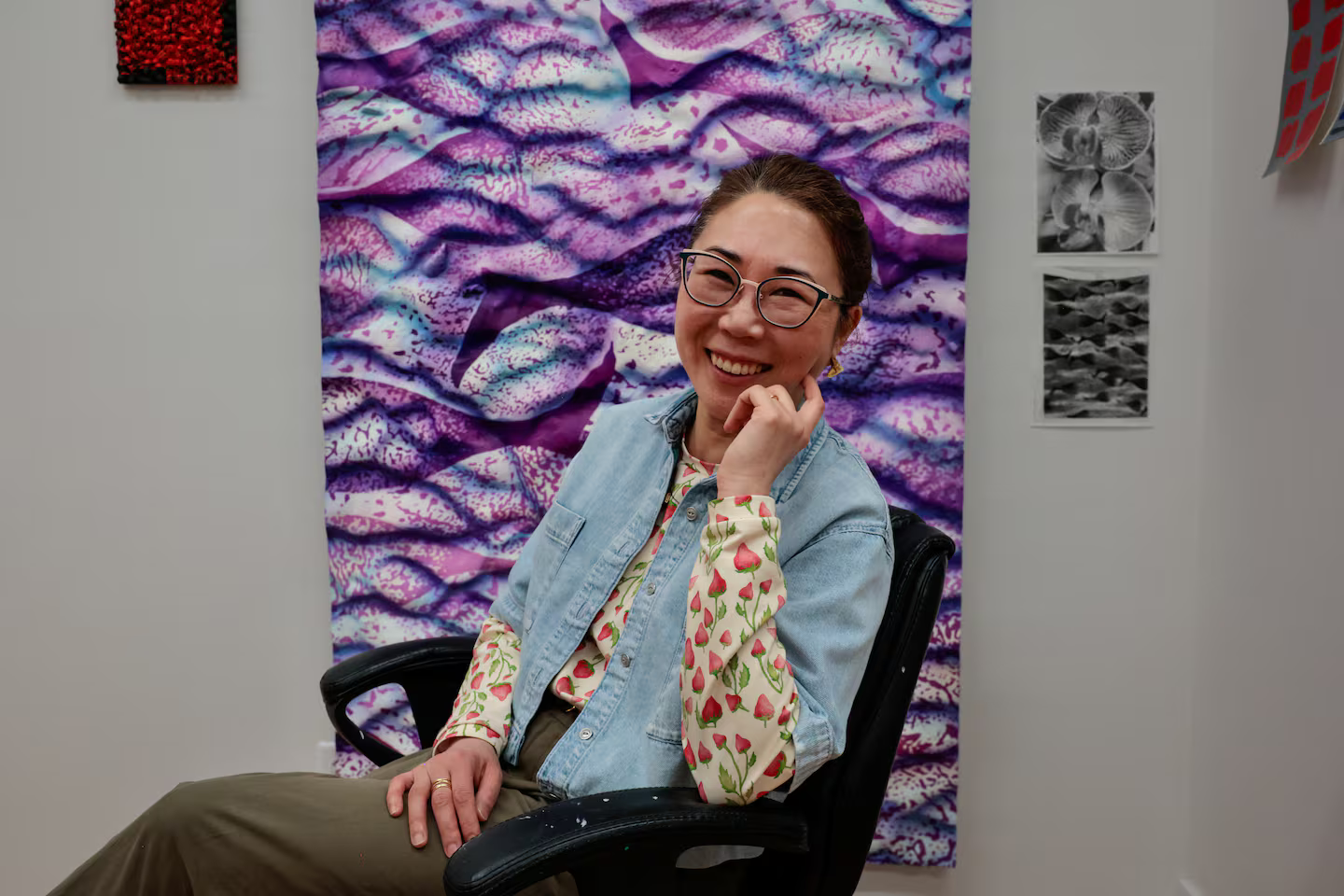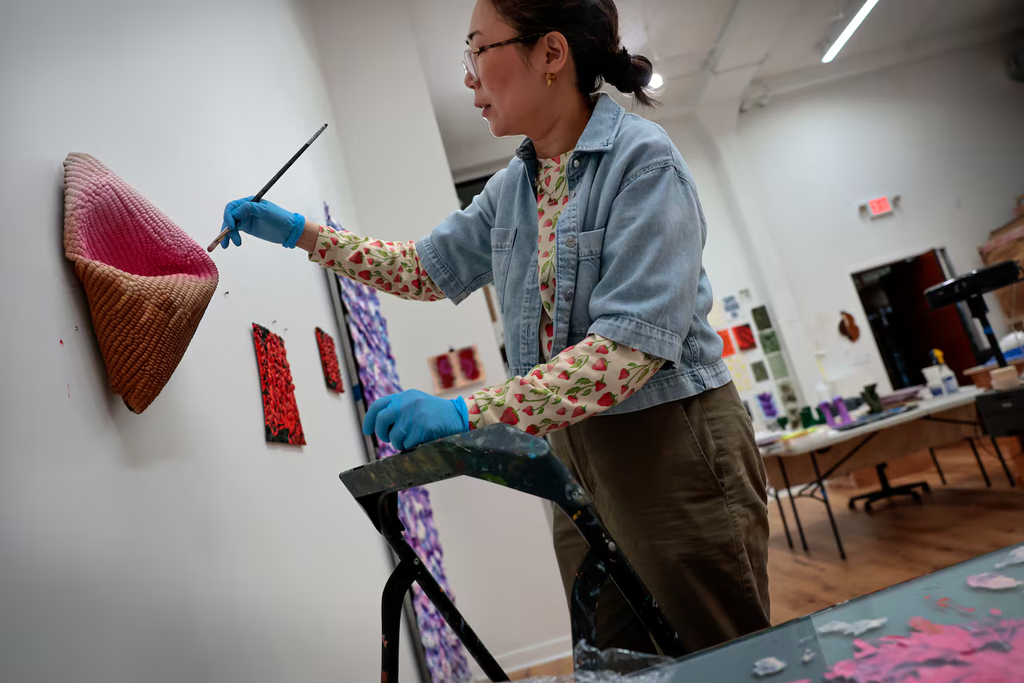Boston Globe feature: Fool the eye and scramble assumptions is the goal of this artist
Lucy Kim, Associate Professor of Art, Painting at BU School of Visual Arts, makes casts and paints them in incongruous ways.

Photos by Craig F. Walker/Globe Staff
Boston Globe feature: Fool the eye and scramble assumptions is the goal of this artist
Lucy Kim, Associate Professor of Art, Painting at BU School of Visual Arts, makes casts and paints them in incongruous ways.
This article was originally published in The Boston Globe‘s Working Artist column on April 28, 2025. By Cate McQuaid
Excerpt
If Lucy Kim‘s sculptural paintings have a message, it’s don’t believe what you see. They fool the eye, scramble assumptions. For instance, she made a resin cast of the pattern of sand at low tide on King’s Beach in Lynn, then painted its undulant grooves with the purple and white patterns of Phalaenopsis orchids.
The artist was still experimenting in late April, as she geared up for “Pigment Spells,” a solo exhibition opening May 15 at Praise Shadows Art Gallery. “These are going to be wet paintings when they get delivered,” she said.
Kim has also been crafting prints in biology labs, with pigment made from melanin produced by live, genetically modified bacteria. Like the paintings, the prints foil snap judgments we make based on what we see.
GET TO KNOW LUCY KIM

Originally from: Kim’s father had a corporate job that kept the family moving, bouncing from Seoul, Korea, to Myanmar when she was four – a place, she said, that informed “so much of my tastes and aesthetic.” They ultimately settled in the Seattle suburbs when she was a teen.
Lives in: Cambridge
Making a living: “I’m not a full-time artist,” Kim said. “I’m a full-time professor.” She teaches at Boston University.
What she makes: “I oil paint on casts,” Kim said, “direct, low relief impressions. But the two things” – the cast and the painting – “don’t match.”
Advice for artists: In a way, Kim’s advice mirrors her art: Question assumptions about what an artist can do.
“Find ways to manage your fears,” she counseled, “especially around stability and familiarity.”